Having an interview is the final step to applying for a US visa. There are many things to prepare. Some are worried about what to wear. Although the US Embassy doesn’t enforce a strict dress code, your outfit impacts first impressions. Filipinos might feel overwhelmed to choosing between a Barong Tagalog and a blazer. This guide will explore US visa interview attire Philippines, ensuring you look respectful, professional, and climate-ready.
Why Your Outfit Matters for a US Visa Interview
Although the authority does not impose a specific dress code for a US visa interview, you have to dress properly for the following reasons.
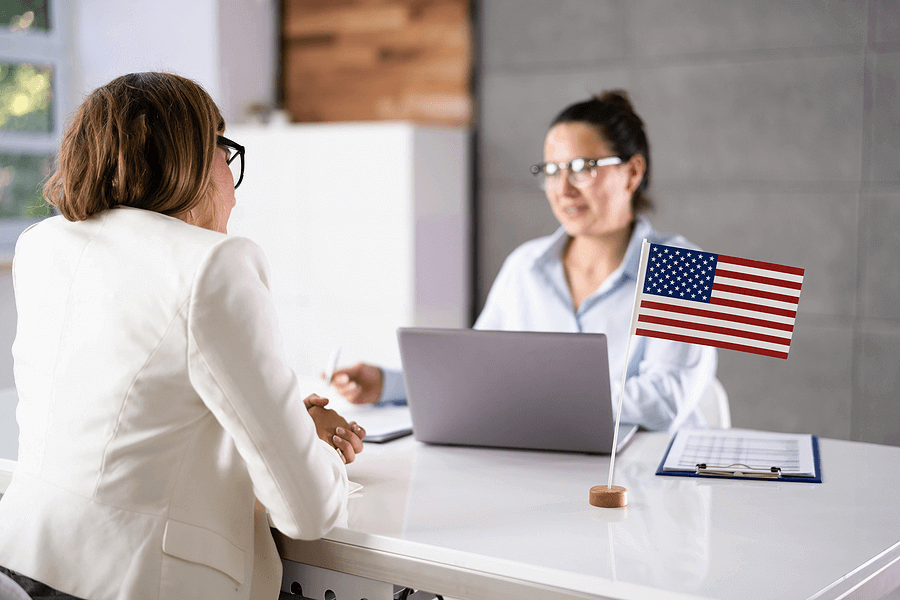
- First Impressions Count
The consular officer might assess your credibility at first sight. Neat attire shows that you are taking the interview seriously.
- Avoid Distractions
Flashy clothes or wrinkled fabrics may distract the officers’ attention. In this case, they might ignore your answers and qualifications, leading to an unfair decision.
- Increase Self-confidence
Outfits and well-chosen accessories help to build a professional appearance and handle the interview more confidently.
- Show Cultural Respect
Sometimes, traditional costumes or clothes with ethnic characteristics can honor cultural norms while maintaining formality.
US Visa Interview Dress Code Breakdown for Filipino Applicants
When choosing the dress for a US visa interview, Filipino applicants must balance cultural identity with international professionalism. While the embassy doesn’t mandate rigid rules, your attire should reflect respect for the process and adaptability to the local climate. Below are general guidelines tailored to Filipino applicants.
- Stick to Pure or Subtle Colors
Neutral and pure colors can avoid distracting the consular officers while making you look smart and reliable. White, beige, and black are common neutral colors that fit most skin tones. Do not wear clothes with messy colors, stripes, or bold patterns.
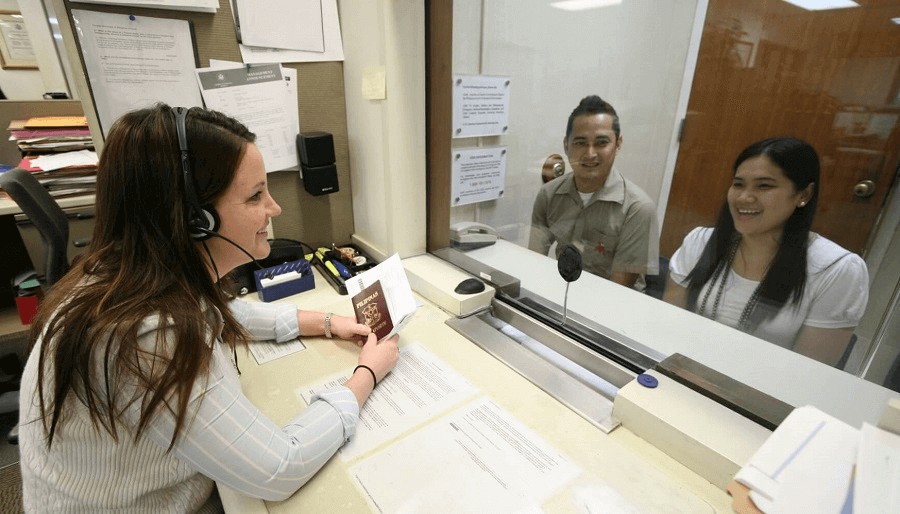
- Prioritize Formal Clothes
Business wear fits any interview, especially when you are applying for a work or student visa. It is suggested to opt for formal clothing like suits, blazers, shirts, blouses, pantsuits, or midi dresses. Avoid overly casual styles like tank tops or ripped jeans.
- Choose Breathable, Climate-Appropriate Fabrics
Lightweight and breathable fabric can make you feel comfortable in the hot season, most of the time in the Philippines, while maintaining a polished look. Heavy fabrics like wool may cause discomfort if you have to wait for a long time before having the interview.
- Ensure Modest Fit and Coverage
Your US visa interview attire should be well-tailored but not too close-fitting. Plunging necklines or overly tight clothes make you appear unkempt or uncomfortable, while loose outfits seem too casual.
- Minimize Accessories and Fragrances
Appropriate accessories can highlight your temperament, but they should have simple and classic styles. Avoid strong perfumes or hair gel as enclosed interview spaces can amplify scents.
- Prepare for Practical Accidents
Finally, if you travel from a faraway place to the US embassy or consulate, it is recommended to prepare for any unexpected challenges. For example, bring an umbrella for sudden rain and wear comfortable shoes.
US Visa Interview Attire for Men, Women, and Minor
Preparing for a US visa interview requires carefully considering the cultural norms, local climate, and professional expectations. Filipino applicants can confidently blend traditional attire like the Barong Tagalog or Filipiniana with modern styles to create a polished, culturally rooted look. Below are tailored recommendations for men, women, and minors based on Philippine fashion and embassy guidelines:
Men’s Attire for US Visa Interview
Filipino men have the unique advantage of pairing international business standards with traditional costumes. Next is the dress code for a US visa interview for men from head to foot.
- Attire
Blazers are usually a popular and safe choice for men. It is suggested to wear black, khaki, brown, or navy blue and pair it with a collared white shirt. Ties are optional if you wear a formal suit.
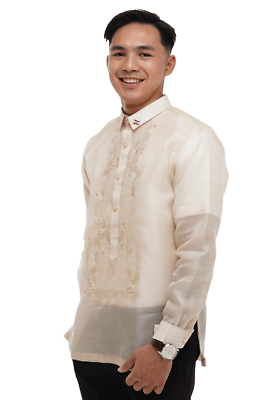
If you prefer traditional costumes, Barong Tagalog is allowed. Dark-colored and lightweight tops, traditionally made from pineapple fiber silk, are ideal for Manila’s tropical climate. As for the bottoms, well-fitted slacks are advised. For a modern twist, opt for a slim-cut Barong with minimal embroidery and French cuffs for added sophistication.
- Shoes
Dress shoes fit any formal occasion. If you don’t want to look too formal, leather loafers are also acceptable. Make sure to polish them the night before. Avoid rubber sandals or sneakers.
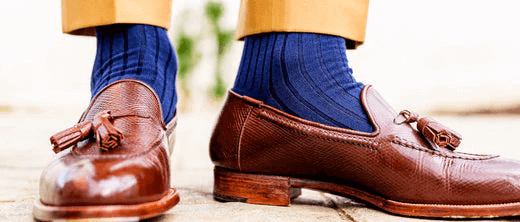
- Grooming
Comb your hair and avoid looking scruffy. Add some gel or mousse to keep it neat. Trim your beard neatly or opt for a clean shave. Keep your nails short and clean. If you use cologne, keep it light and natural. A classic watch or subtle cufflinks can elevate the look without distracting the consular officer.
Women’s Attire for US Visa Interview
- Attire
For modern dressing, you can wear a tailored pantsuit or a knee-length skirt paired with a modest blouse (cap sleeves or quarter-length), but sleeveless tops or wide-collared tops should be avoided.
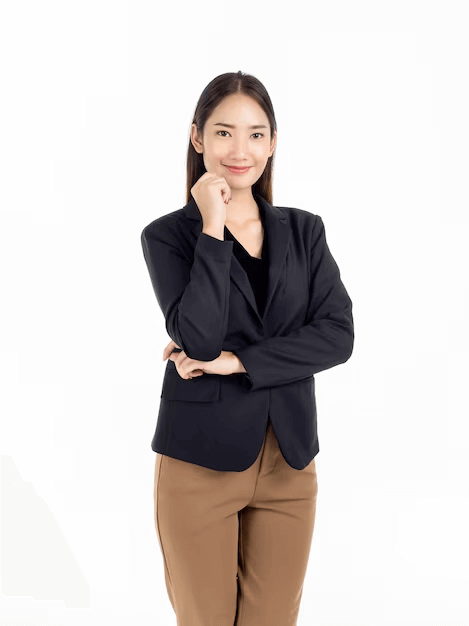
If you favor the traditional costumes, a knee-length Filipiniana dress with delicate embroidery and butterfly sleeves is more suitable. Opt for breathable fabrics like jusi or linen in muted shades.
- Hair
There are no requirements for hairstyle and hair color. Just comb it well to keep it off your face. If you tie it up, use simple and minimal hair accessories to avoid shifting the officer’s attention.
- Shoes
Closed-toe flats or heels under 2 inches suit formal occasions. Neutral shades like ivory or pastel pink match both traditional and modern clothes.
- Accessories
Appropriate jewelry can add a touch of elegance, but don’t overdo it. For example, pearl studs, a delicate necklace, or a slim bracelet are enough. To carry the supporting documents, you might use a pouch or a delicate handbag.
- Makeup
Putting on makeup can make you look more refreshed, but make sure to apply natural tones, like light foundation, neutral lipstick, and subtle mascara. Avoid bold eyeshadow or glitter cosmetics.
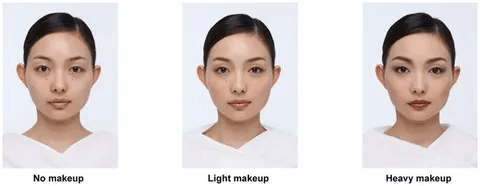
Minor’s Attire for US Visa Interview
The dress code for a US visa interview for minors is simpler than that for adults. Children should pay attention to the guidelines below.
- Clothing
Minors should dress neatly while maintaining age-appropriate comfort. A crisp top (like a polo or T-shirt) as well as dark-colored pants or skirts is a safe choice. For the sake of convenience, girls can put on a simple dress. Cartoon prints or ripped jeans are not suggested.
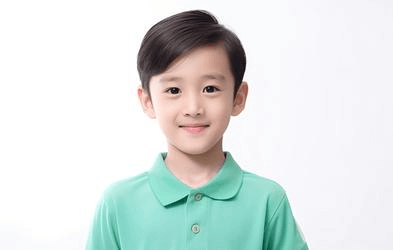
- Footwear
Sneakers, leather sandals, or loafers in a simple style are recommended. Never wear flip-flops to a visa interview.
Climate-Smart Dressing for Philippine Interview Locations
When choosing US visa interview attire, it is necessary to consider the local climate. Dressing out of season can make you feel uncomfortable and look weird. Here’s how to dress smartly while navigating weather challenges in some major cities.
Manila (US Embassy in Manila, BGC Branch
- Climate Issue
The US embassy is located in Manila, the capital of the Philippines. It is hot and humid throughout the year. During June and December, there might be occasional floods and typhoons.
- Local Tip
According to the climate of Manila, you should wear clothes made of breathable fabric. Take an umbrella and waterproof shoes in rainy seasons.
Cebu (US Consular Agency Cebu)
- Climate Issue
There is a U.S. Consular Agency in Cebu where there is a dry season (December to May of the following year) and a wet season (also called typhoon season, June to November). In the dry season, the temperature might reach even 37℃. In the wet season, the temperature is usually 24-30℃. It feels cool after a thunderstorm or typhoon.
- Local Tip
You are advised to choose quick-dry fabrics, such as polyester, nylon, and spandex. You might easily slide and fall down wet pavements, so slip-resistant shoes are necessary. Remember to protect your documents with a water-resistant tote.
Davao (No consulate, but applicants from Mindanao often travel to Manila)
- Climate Issue
Davao is a major city in Mindanao. Surrounded by mountains and next to the sea, the city is not vulnerable to typhoons and features a mild climate. The temperature is usually 20-32℃ throughout the year with moderate rain.
- Local Tip
There is no US consulate in Mindanao. Applicants from Mindanao often travel to Manila to have to visa interview, so you should prepare a set of clothes for a US visa interview for unexpected needs on the way, for example, a clean and wrinkle-resistant blazer or coat.
8 Common Fashion Mistakes Filipino Applicants Make
Although interviewers seldom reject your visa application because of clothing issues, improper dressing undoubtedly reduces the chance of getting approved. Here are some common mistakes that you should avoid.
- Overly Gorgeous Clothing
Bright colors, fancy patterns, or complicated decorations look festive and less professional. For example, there is heavy embroidery on the Barong or many sequins on your dress.
- Wrinkled or Dirty Clothes
You will look slovenly in unironed or stained clothes, so remember to iron your barongs or blazers the night before and store them in a garment bag on the way to the embassy.
- Inappropriate Shoes
Some wear flip-flops, worn-out sandals, or sneakers to have a visa interview, which is too casual. Men are advised to opt for closed-toe shoes, while women should pick modest heels.
- Casual Clothes
Ripped jeans, graphic T-shirts, or tank tops look fashionable but undermine the interview’s seriousness. That’s why we recommend tailored slacks, collared shirts, or knee-length skirts.
- Clothes That Don’t Fit
Oversized or tight dresses look unprofessional. Most importantly, tight-fitting clothes can make you feel uncomfortable.
- Heavy Perfume/Cologne
Strong scents in small interview rooms are especially pungent, so make sure to use mild fragrances sparingly or skip them entirely.
- Unkempt Hair/Grooming
Greasy hair, messy hair, or untrimmed beards suggest poor preparation. Men should trim facial hair neatly, while women can tie their hair into a sleek bun or braid.
- Excessive Makeup
Excessive makeup, such as an unmatched foundation with the skin tone, smoky eyes, bold eyeliner, or bright lipstick, might change your true appearance or distract the officer. To build an elegant and approachable image, choose natural makeup tones.
FAQ
Can I wear my nursing uniform if applying for a work visa?
No. Although uniforms show your profession, they may imply that you’re “on duty” instead of going for a formal visa process. Other uniforms, like police uniforms and school uniforms, are not recommended. If you want to show your occupation, just bring an employment ID or a labor contract.
What if my interview is during ‘Undas’ – should I avoid black?
Black is acceptable. However, as the embassy prioritizes professionalism over cultural context, it is advised to balance it with lighter tones to avoid a somber appearance. For example, pair black pants with a white Barong Tagalog or add a pastel scarf to a black dress if you do wear black during Undas (All Saints’ Day).
What is not allowed for a US visa interview?
To prevent cheating, candidates must not bring electronics while attending the interview, such as mobile phones, headphones, or audio or video recording devices. Moreover, flammable items, sharp objects, or explosive material are prohibited, such as cigarettes, lighters, scissors, pocketknives, and more.
What kind of dress is smart casual for a US visa interview?
Smart casual balances comfort and formality, for example, a polo shirt paired with chinos and leather loafers for men (add a blazer for extra polish) and a knee-length A-line dress or a tailored blouse with dress pants for women. Remember to avoid overly casual elements like tank tops, shorts, mini-skirts, beachwear, sandals, or flip-flops.
What is the best color to wear to an interview?
White, beige, navy, soft pink, or sky blue are common neutral tones. These colors are ideal for both men and women while conveying professionalism. Darker colors like charcoal or deep gray are also acceptable, but avoid all-black and pair them with lighter accessories.
Can I wear slippers during the interview?
No. Slippers or open-toed sandals are too casual and look impolite. Men should choose close-toed leather shoes, while ladies should wear modest heels or loafers. When you are going for the interview on rainy days, bring a pair of formal shoes in a bag and change them after arriving at the embassy.
Can I wear jeans during the interview?
Yes, but the style matters. Dark, non-ripped jeans are acceptable, and pair them with a Barong Tagalog, blazer, or structured blouse to look formal. Avoid distressed, light-wash, or baggy jeans. If you are not sure, put on slacks or a knee-length skirt, which is favored by the embassy officer.
How to pass a US visa interview in the Philippines?
Dressing professionally is a primary step. Moreover, to pass a US visa interview, you should bring all required documents (e.g., passport, bank statements, invitation letters) and answer questions confidently. Maintain eye contact with the officer and stay calm and honest. Before attending the interview, practice common questions.
Conclusion
A decent dress for a US visa interview can leave a good impression and increase the chance of approval. Barong Tagalog or a blazer is acceptable US visa interview attire in the Philippines. No matter which one you choose, stick to the dress code of professionalism and practicality. We hope this article will help you balance cultural pride with international standards and avoid common mistakes. Just prepare for the climate and walk into that embassy with confidence!